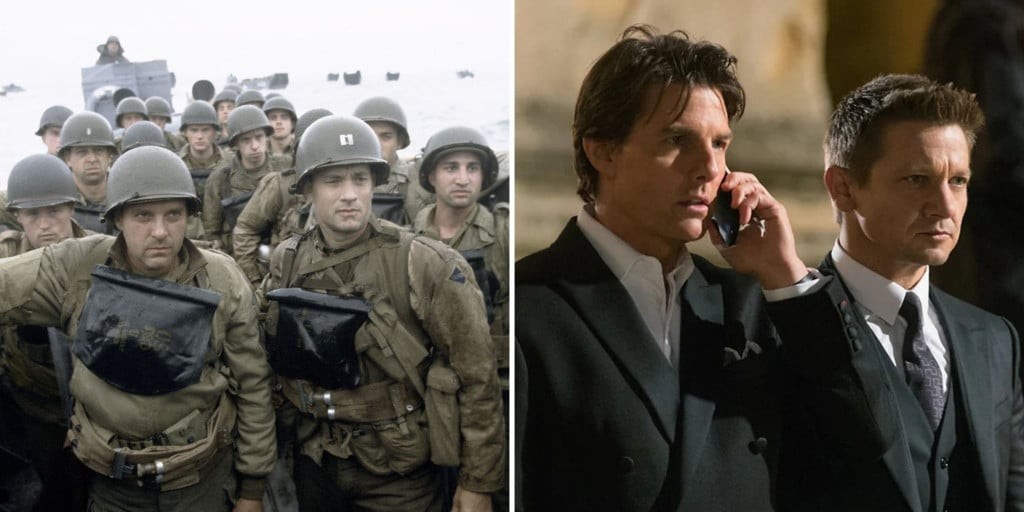Movies often depict dramatic scenes of people diving into water to dodge bullets, like in Saving Private Ryan and Mission Impossible: Ghost Protocol. But how much truth is there to this “underwater myth”? Can water really protect you from gunfire? This article explores the science behind bullets in water, examining the factors that influence their range and debunking common misconceptions.
The Science of Drag: Water vs. Air
The key to understanding how far bullets travel in water lies in the concept of drag. Drag is the resistance a fluid offers to an object moving through it. We experience air resistance constantly, but water’s resistance is far more significant.
 Private Ryan Omaha Beach scene
Private Ryan Omaha Beach scene
Imagine throwing a ball. In air, it travels a considerable distance. But in water, the drag force drastically reduces its range. Similarly, bullets encounter immense resistance in water, significantly limiting their penetration.
Factors Affecting Bullet Range Underwater
Several factors determine how far a bullet will travel underwater:
- Bullet Velocity: The faster the bullet, the greater the drag force it encounters.
- Bullet Type: The shape and composition of the bullet influence its drag coefficient.
- Angle of Entry: A shallow angle provides greater protection than a direct shot.
- Water Density: Denser fluids provide more resistance.
 bullet-slowing-down-underwater
bullet-slowing-down-underwater
The drag equation, FD = 1/2 p v^2 A CD, highlights the relationship between drag force (FD), fluid density (p), velocity (v), reference area (A), and drag coefficient (CD). This equation demonstrates that as bullet speed (v) increases, the water’s opposition to its movement also increases proportionally. Water’s higher density compared to air is a primary factor in how quickly bullets decelerate underwater.
Mythbusters Tested: Can Water Stop Bullets?
The Discovery Channel’s Mythbusters tackled this very question. They fired various firearms, including a 9mm pistol, shotgun, M1 Garand, and a .50-caliber rifle, into water. Their findings indicated that water does indeed offer protection from most firearms.
 faster the bullet moves meme
faster the bullet moves meme
However, it’s crucial to note that real-world scenarios are rarely as straightforward as a direct shot from above. In most situations, bullets are fired at an angle. Therefore, being 3-5 feet (0.9-1.5 meters) underwater at a 30-degree angle can provide a significant degree of safety.
Water: Bulletproof or Not?
While water can significantly slow down bullets, it’s inaccurate to call it “bulletproof.” The effectiveness of water as protection depends on multiple variables.
- Firing Angle: A shallow angle drastically reduces penetration.
- Distance: The deeper the water, the safer you are.
- Firearm Type: More powerful firearms may penetrate further.
An object less than 3 feet underwater is still vulnerable to bullets fired from above the surface.
Conclusion: Separating Fact from Fiction
While movies often exaggerate the protective capabilities of water, there’s a basis in reality. Water provides significant resistance to bullets, slowing them down dramatically. However, it’s not a foolproof shield. Factors like the angle of entry, distance, and type of firearm all play a crucial role. Understanding these factors can help you separate fact from fiction when it comes to the “underwater myth.”